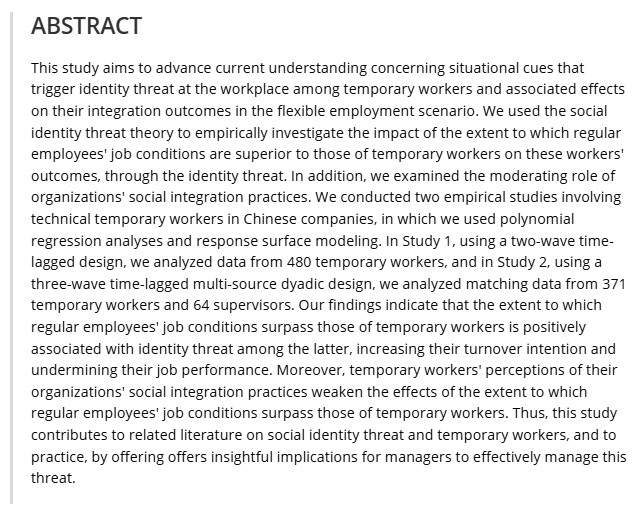News
LUSM’s Faculty Member LU Wenzhu Achieved Significant Research Outcome in Multi-employment Management Practices
The evolving global economic landscape introduces dynamic uncertainties to organizations' external business environment. In response, more organizations are adopting multi-employment practices, including temporary workers, to enhance strategic flexibility and swiftly meet market demands. As indicated by the survey conducted by ManpowerGroup Greater China Limited, over 38% of employers worldwide recruit external temporary workers, with more than 90% of companies in the United States hiring outsourced workers. Renowned domestic enterprises such as Huawei Technologies Co., Ltd., ByteDance Ltd., Tencent, and Alibaba have successively collaborated with third-party outsourcing companies like the Adecco Group, Chinasoft International Ltd., and SoftStone to introduce both "elite outsourcing" and "general outsourcing" to assist permanent workers in completing project tasks. However, the practice of multi-employment confronts an important challenge, that is, temporary workers can not be effectively integrated into the organization, resulting in the loss of the return on human capital investment.
To tackle the issue, LUSM’s young research fellow LU Wenzhu, along with collaborators from South China University of Technology and the Australian National University, deeply analyzed temporary workers' integration barriers using the social identity threat framework and job characteristics theory. The main research findings were published in the top-tier journal Human Resource Management under the title "'Who am I?' Exploring Temporary Workers' Integration in Multi-Employment-Type Organizations From the Identity Threat Perspective."
To further examine the relevant ideas presented in this study, researchers conducted two additional studies. Study 1 employed a two-wave time-lagged design, analyzing data from 480 temporary workers. Study 2, on the other hand, utilized a three-wave time-lagged design and explored matched data from 371 temporary workers and 64 managers.
Research findings: The classic "core-periphery" management practice in the context of multi-employment, that is, the inconsistency between the working conditions of permanent workers and temporary workers constitutes the inducing clue of the identity threat of temporary workers, and further leads to their integration failure, which is manifested as low performance and frequent turnover. At the same time, social integration practice, as one of the important measures for organizations to build a higher level of common in-group identity, effectively weakens the potential negative impact of "core-periphery" management practice on its integration results through the threat of temporary worker identity.
Practical significance: This study provides crucial warnings and practical insights for organizations that hire temporary workers to build strategic agility. Identity threats associated with stigmatized social identities can undermine the integration outcomes of temporary workers. However, one of the key initiatives for multi-employment practices is to standardize work processes and follow the core-periphery work design principle, which will inspire identity threats for temporary workers, which in turn will negatively impact their integration outcomes. Therefore, organizations need to re-evaluate the rationale behind the classic core-periphery management practices. Additionally, research indicates that organizational social integration practices are crucial measures for effectively managing identity threats faced by outsourced workers and facilitating their integration.






